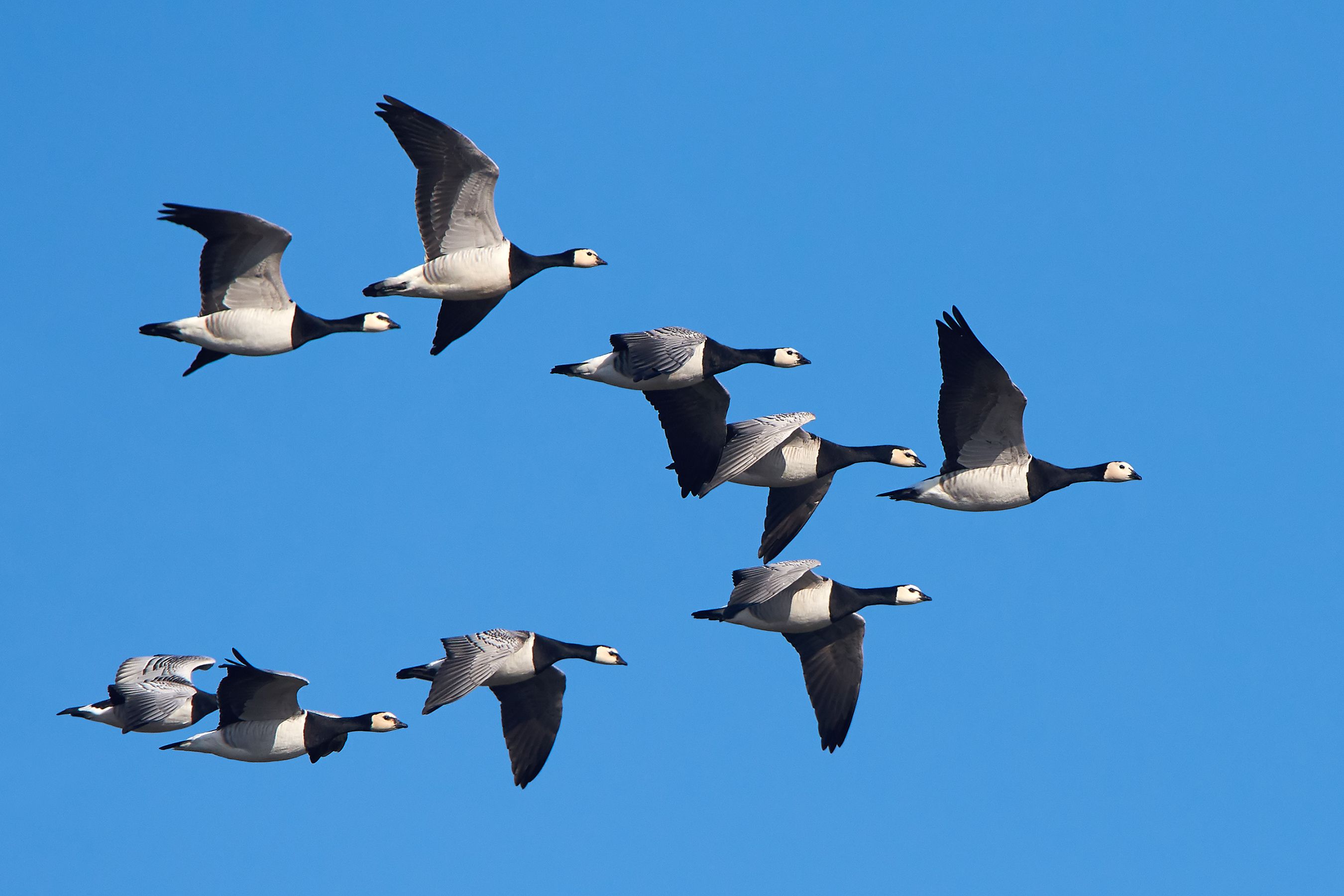Geese Fly to Exhaustion in Race Against Climate Change

Every spring, thousands of barnacle geese make a grand migration from their temperate winter habitat in northern Europe and northwestern Russia to their summer nesting grounds in the Arctic. It's a journey of more than 1,800 miles (3,000 kilometers) that usually takes about a month, but new research has found that rising temperatures in the Arctic are pressuring the geese to make the trip in a grueling one-week sprint.
Barnacle geese (Branta leucopsis) are medium-size water birds found in Europe, Russia, the United Kingdom, Wales and the Arctic, according to the National Audubon Society. Until recent years, the timing of the birds' spring migration meant they arrived in the Arctic right as the snowmelt exposed their nesting sites and initiated plant growth. The birds would almost immediately lay their eggs, which would then hatch 30 or so days later, right at the peak season for plant growth — perfect timing for hungry, growing goslings. [Photos: Birds Evolved from Dinosaurs, Museum Exhibit Shows]
But in the past few decades, scientists noticed that things have changed. Temperatures in the Arctic have been getting warmer earlier and earlier in the season — by about a day per year — and this is putting significant pressure on the migrating barnacle geese.
The geese are trying to keep up with these environmental changes, but they're struggling. Scientists have found that the geese still leave at about the same time every year, but the animals have shortened their travel time to the Arctic. A trip that used to take about a month now takes the geese only about a week, as the birds will spend less time at their stopover sites or will skip them altogether and just keep flying.
Instead of promptly laying their eggs as they usually do when they arrive at their Arctic nesting grounds, the exhausted geese need more than a week to recuperate and build up enough energy before they can start nesting. By the time the animals are ready to lay their eggs, the grasses and plants the birds feed on have been growing for a few weeks. As a result, goslings emerge from their eggs after the peak growing season rather than during it, and that's causing the young birds' survival rate to decline.
The researchers predicted that barnacle geese may not be able to keep up with a continually warming climate and, as a consequence, their population may suffer. However, the researchers also pointed out that geese are a social species, and if enough individuals leave earlier, the rest may follow.
The study was published online July 19 in the journal Current Biology.
Get the world’s most fascinating discoveries delivered straight to your inbox.
Original article on Live Science.

Kimberly has a bachelor's degree in marine biology from Texas A&M University, a master's degree in biology from Southeastern Louisiana University and a graduate certificate in science communication from the University of California, Santa Cruz. She is a former reference editor for Live Science and Space.com. Her work has appeared in Inside Science, News from Science, the San Jose Mercury and others. Her favorite stories include those about animals and obscurities. A Texas native, Kim now lives in a California redwood forest.


